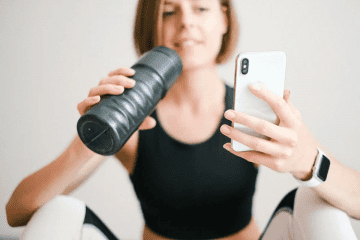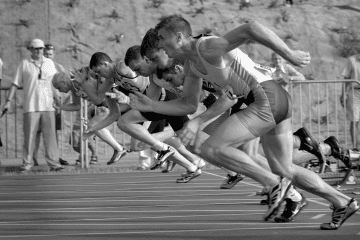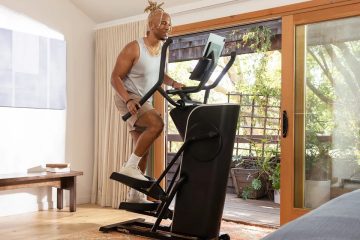Muscle Burn Explanation
I wondered many times Why Muscles Not Burning in Workouts! Muscle Burn Explanation, It’s like playing a game and not feeling the excitement! Well, don’t worry, because there’s a reason for it. Sometimes, our muscles don’t burn right away, and that’s okay.
It’s like they’re warming up, getting ready for the big action. So, just like when you start a race and you don’t sprint right away, our muscles take a little time to get into the game. Let’s explore why this happens and what it means for our bodies!
Fallacies about muscle burn pain is an indication that you’re exercising hard enough to get the benefits you want (i.e., losing weight or building muscle).
If your goal is to get bigger muscles then your workouts should be getting harder over time.
Delayed onset muscle soreness (DOMS) is the pain and stiffness felt in muscles several hours to days after unaccustomed or strenuous exercise.
People starting an exercise program need guidance.
The burning sensation during the workout is due to lactic acid buildup in the muscles.
A journalist once asked Muhammad Ali how many sit-ups he did every day to stay in top shape. His answer was: “I don’t know because I don’t start counting until it hurts.” And we partly agree with him.
If you feel muscles not burning in workouts or at least some resistance, it means your position or movement may be incorrect. You might also be targeting the wrong muscle or maybe the number of reps is too low.
Keep in mind that if you feel real pain during an exercise, it is always best to stop and consult your doctor first.

Discover How I Can Help You Lose Weight
How to meal prep – even if you don’t have any nutrition background!
A little-known way to lose weight – you’ll be amazed!
A stupidly simple trick for losing your belly fat.
What the professionals in fitness do when they want to lose weight.
The secrets of losing belly fat. This one will blow you away!

Fallacies about Muscle Burn
Muscle Burn Explanation, burning muscle pain is an indication that you’re exercising hard enough to get the benefits you want (i.e., losing weight or building muscle). However, relying on this sensation can lead to injury because muscles are capable of experiencing a burn even when performing exercises incorrectly. When using weights, make sure they are light enough to perform your exercise in good form.
Sore After a Workout
Initially, when it’s your first time starting to working out, you get really sore event if you use lightweight of 10 pounds or less. After a while, your body would get accustomed to the weight training. It also depends on how many reps and sets you do for each muscle most likely you are not doing enough when pushing hard.
Build Muscles Fast
When you surpass the limit of what you are accustomed to or increase the number of reps on an uncomfortable exercise, you risk severe muscle pain. Also, failing to warm up before exercising instead of transitioning gradually into the workout ends up speeding up your muscles’ tiredness. This means that your body and muscles tire out faster.
“What we know about muscle adaption to [physical] loads is that when you put it under load or under stress, you actually cause microscopic injury to the muscle,” Dr. Jowett says.
Not Getting Results
Another reason why muscles not burning in workouts, the more you do something the easier it gets. This is normal. You are not getting weaker, but your body gets used to what you are doing. Every time you work out you make little tears in your muscle fibers and they repair themselves stronger than before. If your goal is to get bigger muscles then your workouts should be getting harder over time.
Burning is most likely a response to something new. The exercises are also fairly easy, and a few of them aren’t great for your back. For better bodyweight stuff to add to your workouts, check out our library of workouts. Build yourself from any level even beginner.
➡️ Start Your 7 Day FREE Trial
When you’re training for bodyweight, it’s not always about doing the same exercises or sets. The pushup is an excellent exercise to build upper body strength, but it’s not always the best method to progress. It may be better to find a harder exercise or different system. You can find a harder exercise or system to do, such as martial arts or sports. These are all good choices for challenging exercises that don’t use weights and never get boring.
If You Get Sore Muscles After Exercising, Don’t Stop.
Delayed onset muscle (DOM) soreness is common after exercise. It’s a feeling of pain or tenderness in your muscles that can last for days, weeks, or even months after you exercise. DOMS usually means that your muscles are getting stronger.
Delayed onset muscle soreness (DOMS) is the pain and stiffness felt in muscles several hours to days after unaccustomed or strenuous exercise.
The soreness is felt most strongly 24 to 72 hours after the exercise. It is thought to be caused by eccentric (lengthening) exercise, which causes small-scale damage (microtrauma) to the muscle fibers. After such exercise, the muscle adapts rapidly to prevent muscle damage, and thereby soreness, if the exercise is repeated.
Delayed onset muscle soreness is one symptom of exercise-induced muscle damage. The other is acute muscle soreness, which appears during and immediately after exercise.
Citation: Wikipedia
“Delayed onset muscle soreness (DOMS) is a common result of physical activity that stresses the muscle tissue beyond what it is accustomed to,” says David O. Draper, professor and director of the graduate program in sports medicine/athletic training at Brigham Young University in Provo, Utah.
Getting cramps or DOMS can happen to anyone it’s simply a muscle discomfort symptom of using your muscles and placing stresses on them that are leading to adaptations to make them stronger and better able to perform the task the next time.
But for the person just starting out and not conditioned, this can be intimidating. People starting an exercise program need guidance. People that are not fit try things, get all excited and unfortunately, some instructors do not tell them that they will be sore.
However, for the person just starting out and not conditioned for exercise, this can be intimidating. People starting an exercise program need guidance. People that are not fit try things, get all excited and unfortunately, some instructors do not tell them that they will be sore.
Lactic Acid
According to research, lactic acid is not responsible for post-workout muscle soreness. While lactic acid may accumulate in a person’s body while working-out, it does not cause sore muscles. Lactic acid is produced by our body when we exercise. The burning sensation during the workout is due to lactic acid buildup in the muscles.
The burning feeling that is felt in your muscles when you are exercising is caused by lactic acid. Lactic acid is produced in the muscles as a result of the oxygen not being able to convert food into energy. This causes that burning feeling. Researchers have studied the level of lactic acid in muscles immediately after exercise and found that it quickly clears from the system, so it does not cause muscle soreness after your workout.
It is beneficial for you to have a planned workout routine like endurance athletes, who alternate intense workouts with periods of rest or light exercise. This allows your muscles time to recuperate and rebuild after hard workouts.
How to Ease Those Aching Muscles?
Several remedies, such as rest, heat, anti-inflammatory medication, massage, and stretching have been reported to help with muscle recovery. Amino acids are the building blocks of proteins and are used to decrease muscle fatigue.
Stretching is undervalued. Unfortunately, many people do not stretch or do not stretch enough before and after their workout. Stretching helps break the cycle which goes from soreness to muscle spasm to contraction and tightness.
While it’s common to experience muscle soreness after a workout, never push through the pain. Stop exercising and rest your muscles for a few days while they recover. This can be accomplished by taking it easy for a few days while your body adapts. Or try some light exercise such as walking or swimming. Keeping the muscle in motion can also provide some relief.
Conclusion
Your body is an amazing machine that makes rapid changes to whatever challenges you present it with. Whether you are taking up running or the reformer, your muscles will respond accordingly.
When you’re first starting any new type of exercise, you’ll often feel very shaky upon completion and then sore shortly afterward. Soon after, your body will adapt to the new type of movement, causing you to no longer feel soreness.
The burning sensation or soreness you feel after a workout is not necessary to see improvements. It’s part of the muscle conditioning process. If you do an activity, your body will be immune for a few weeks to a few months — the next time you do that activity, there will be less muscle tissue damage, less soreness, and faster strength recovery.
Exercise may cause some muscle soreness. If you have a history of injuries, it is important to be careful in starting a new exercise routine. Exercise-induced muscle soreness can be distinguished from overuse or injury by the intensity and duration of pain. The soreness from exercise will typically go away after a couple of days. Muscle injury or overuse causes pain.
If soreness prevents you from performing daily activities, then that is too much soreness. It can deter someone from continuing a workout program if they are in pain when trying to work out.
Reference: WebMed



0 Comments